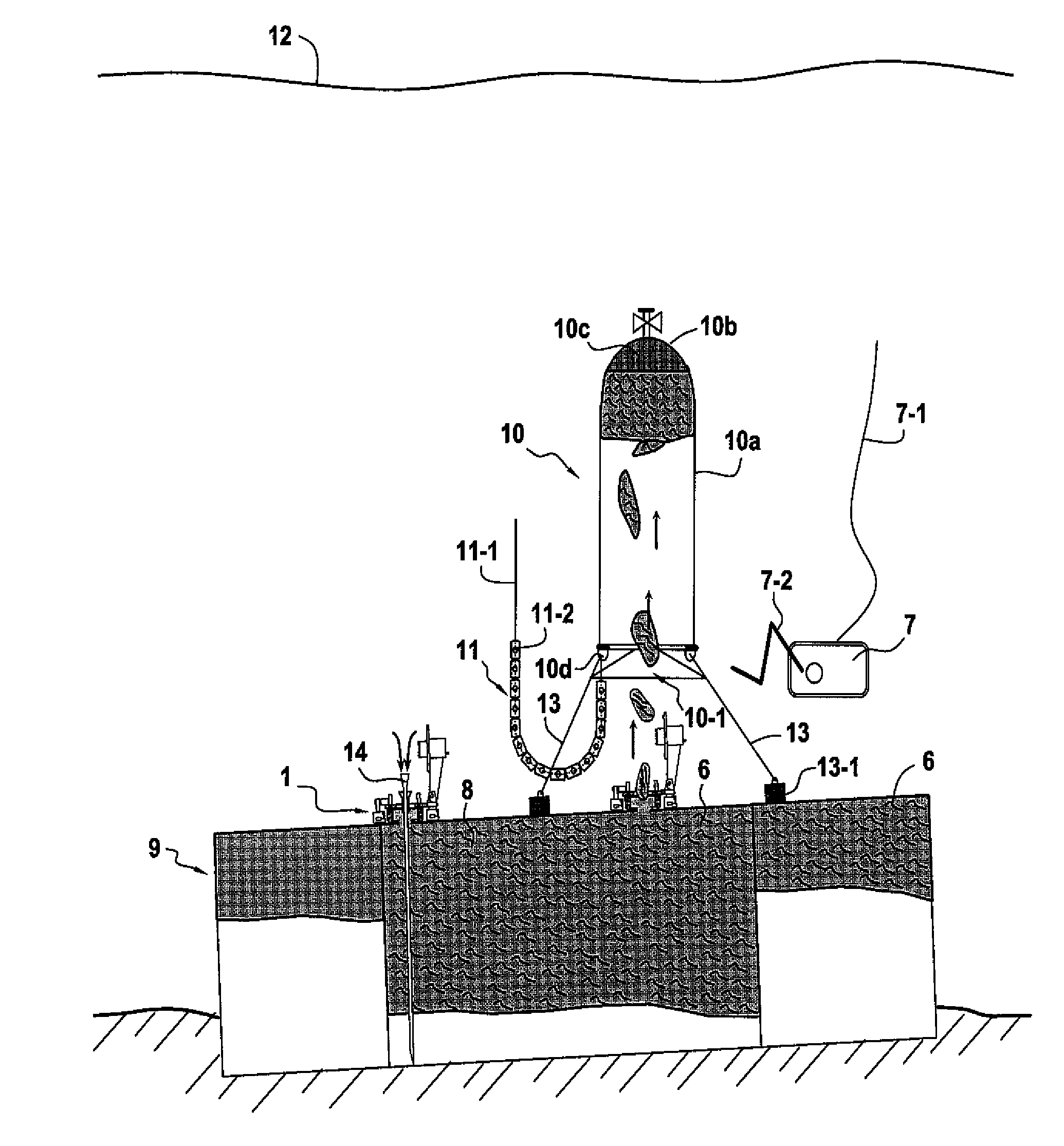Device for cutting out and opening/closing an orifice in a wall at the bottom of the sea
- Summary
- Abstract
- Description
- Claims
- Application Information
AI Technical Summary
Benefits of technology
Problems solved by technology
Method used
Image
Examples
Embodiment Construction
[0125]FIG. 1 is a side view in section of the wreck of a ship containing polluting substances, such as heavy fuel 8, stored in the tanks 9 of said ship, and two devices 1 of the invention that have enabled the hull 2 to be drilled at two locations. Each of these devices includes a tilting cover shown in the open position, but also suitable for closing the orifice. The shuttle reservoir 10 having a capacity of 150 m3 is positioned vertically above a first said device 1 of the invention and it receives the polluting substance 8 that escapes from said tank and that moves vertically upwards at slow speed, given its density which remains less than the density of sea water. Said shuttle 10 is held laterally by cables connected to deadweight blocks 13-1 weighing 250 kilograms (kg), merely placed on the wall 6 of the ship, the vertical forces due to the buoyancy of the reservoir 10 are counterbalanced by a handling and stabilizing device 11 with heavy blocks 11-2 described below with refere...
PUM
| Property | Measurement | Unit |
|---|---|---|
| Time | aaaaa | aaaaa |
| Force | aaaaa | aaaaa |
| Pressure | aaaaa | aaaaa |
Abstract
Description
Claims
Application Information
 Login to View More
Login to View More - R&D
- Intellectual Property
- Life Sciences
- Materials
- Tech Scout
- Unparalleled Data Quality
- Higher Quality Content
- 60% Fewer Hallucinations
Browse by: Latest US Patents, China's latest patents, Technical Efficacy Thesaurus, Application Domain, Technology Topic, Popular Technical Reports.
© 2025 PatSnap. All rights reserved.Legal|Privacy policy|Modern Slavery Act Transparency Statement|Sitemap|About US| Contact US: help@patsnap.com



